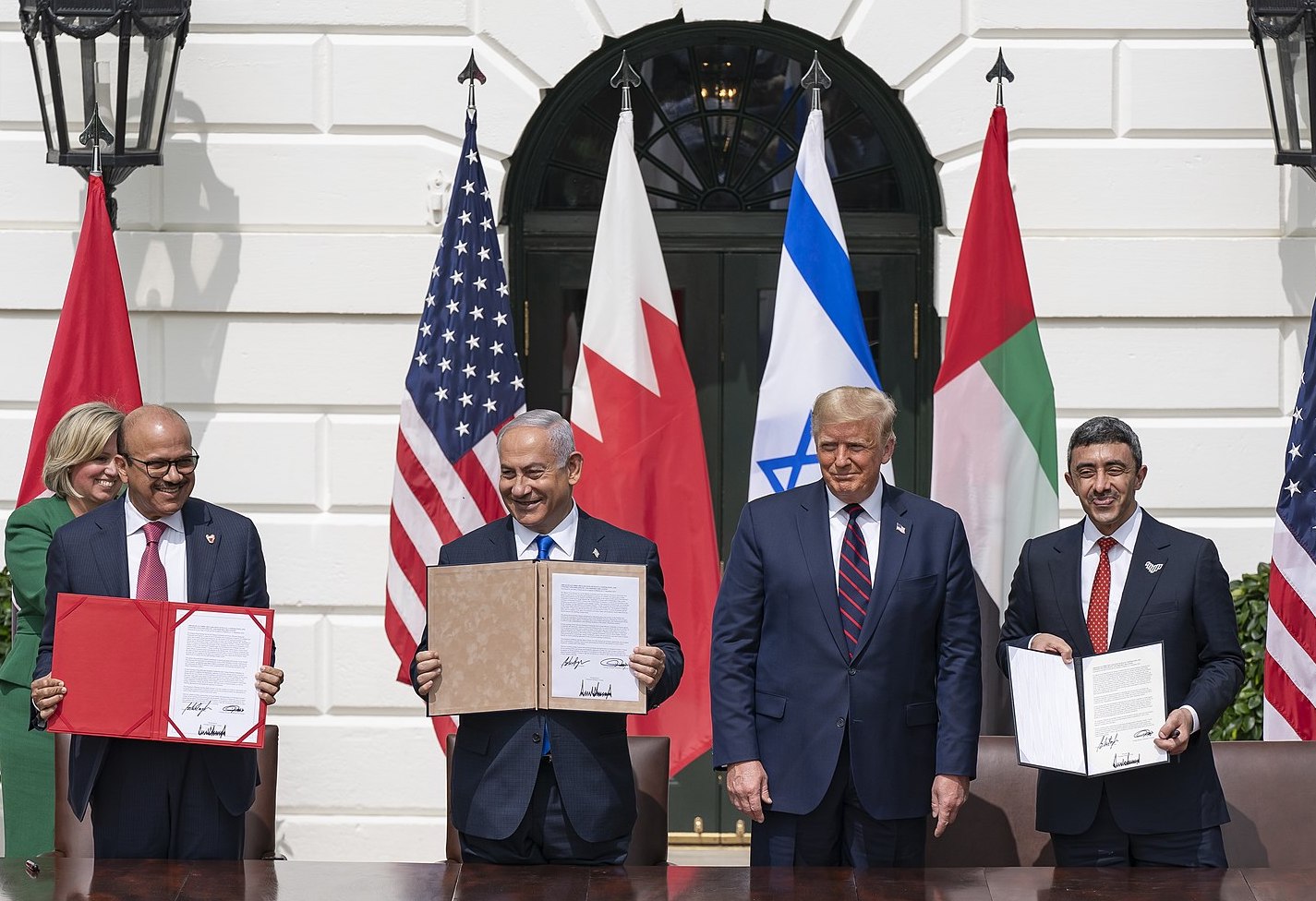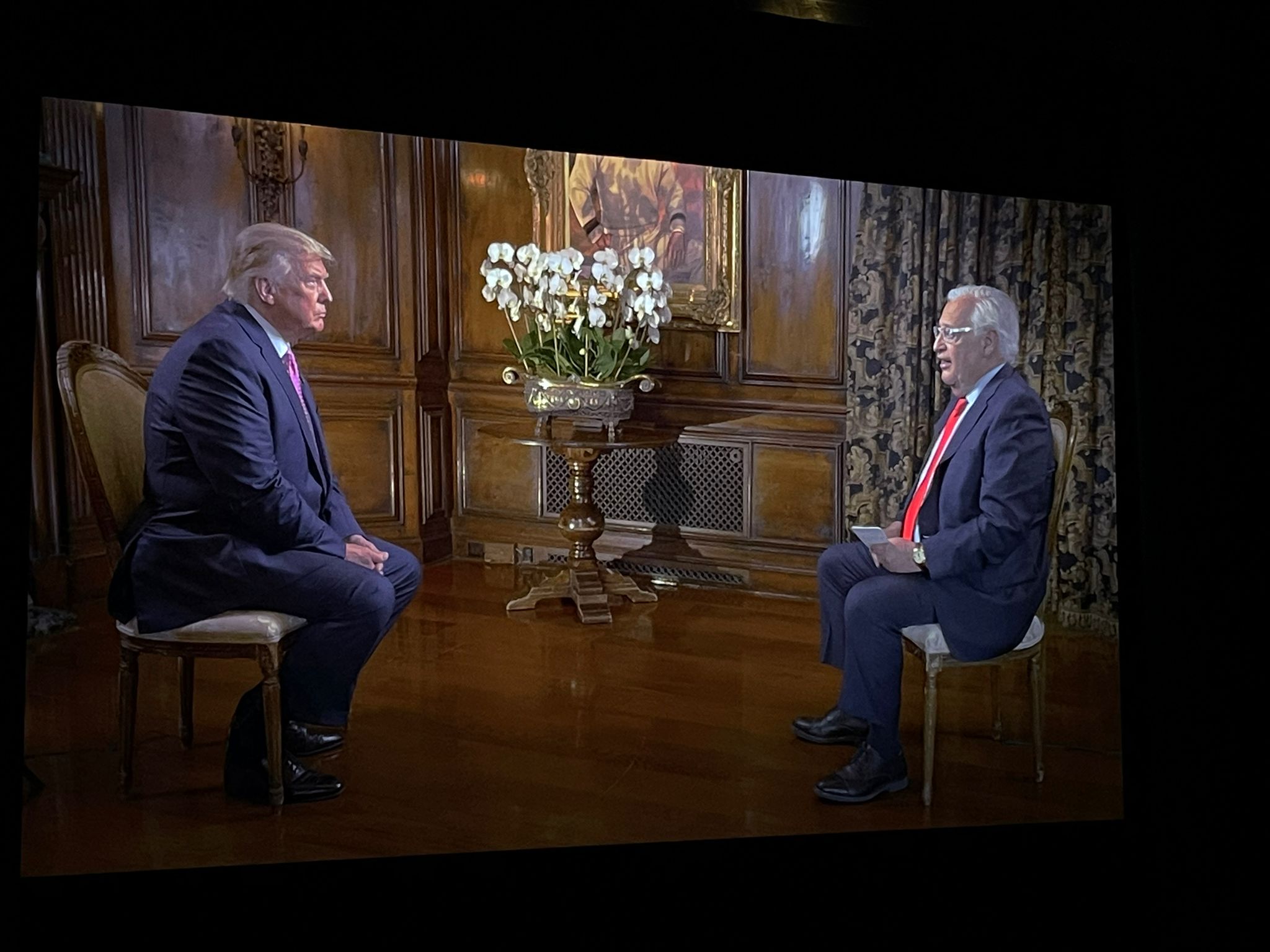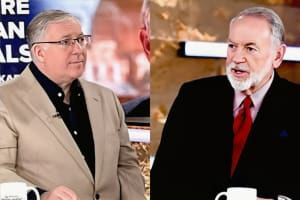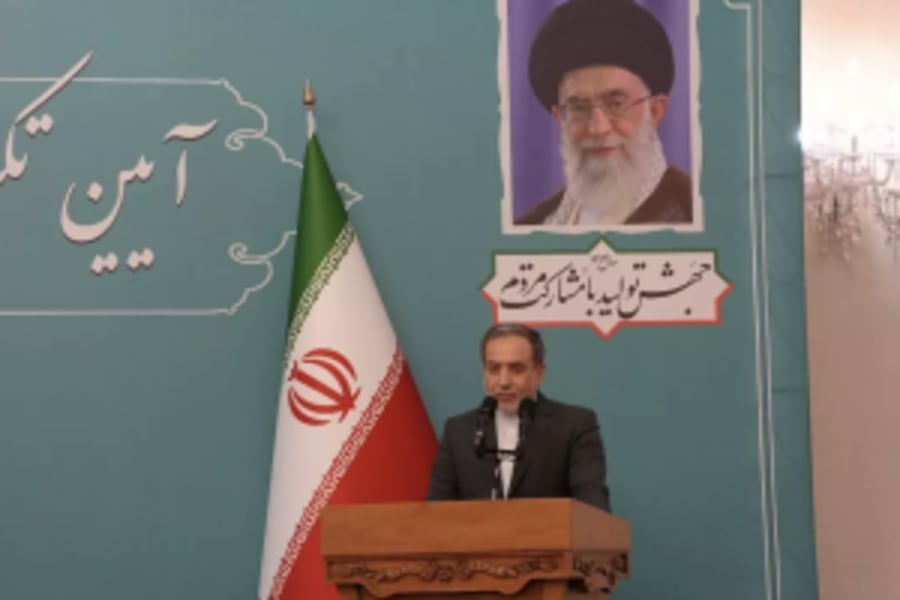ALL ISRAEL NEWS first to publish major excerpt from Amb. David Friedman’s fascinating new book, ‘Sledgehammer: How Breaking with the Past Brought Peace to the Middle East’
Book goes on sale February 8

EDITOR’S NOTE: The following is the prologue from Ambassador David Friedman's new book. It is published here with permission from him and his publisher.
SLEDGEHAMMER: How Breaking with the Past Brought Peace to the Middle East
Birth of a Metaphor
The prophets Isaiah and Micah each use identical words to describe the ultimate in diplomacy: “They shall beat their swords into plowshares.”
Converting the equipment of war into tools of peace is the goal of every American member of the foreign service. But most overlook the fact that the prophets didn’t use the phrase “convert their swords,” they used the word “beat” (a more literal interpretation of the Hebrew would be “crush”). The prophets suggested a less-than-delicate approach to peacemaking might be necessary, something requiring more than a scalpel or a file. Perhaps even a sledgehammer.
As US ambassador to Israel, that was my approach. It led to a once-in-a-generation series of peace agreements between Israel and five Muslim countries. This book tells the story of how those peace agreements—the Abraham Accords—came to be.
I didn’t choose this “sledgehammer” metaphor; it chose me. It began fifteen years ago with a burst sewage pipe in the City of David, an eleven-acre ridge just south of the Temple Mount in Jerusalem.

The City of David, one of the most archaeologically excavated sites in the world, is Jerusalem central—the very place where the kings of the Bible ruled, and the prophets of the Bible preached. Local plumbers were called in to determine the source of the water break. As they excavated the terrain, they realized that there was something unusual below street level.
As often happens in Jerusalem, this prompted a call to the Jerusalem Municipality, which in turn resulted in a rushed visit from the Israel Antiquities Authority. As the experts examined the hole in the ground, they realized that they had stumbled upon a discovery of literally biblical proportions—they had uncovered the ancient steps leading to the Pool of Siloam.
The Pool of Siloam was originally built by Hezekiah, king of Judah, in the eighth century BCE, and fed by the Gihon Spring through the Siloam Tunnel. Hezekiah built the water tunnel to ensure an adequate water supply to the ancient City of Jerusalem, especially in the event of a threatened siege from Judah’s enemies to the north. The Babylonians apparently destroyed the pool at the end of the sixth century BCE, but the Hasmoneans rebuilt it. King Herod enhanced it about two hundred years later.
Archaeologists and scientists concurred that this discovery was the Pool of Siloam. The pool was the public bath where Jewish pilgrims would purify themselves before ascending to the Temple. According to Christian tradition, the Pool of Siloam is where the New Testament records that Jesus cured a blind man.
Discovery of the Pool of Siloam prompted a follow-up inquiry as to how the pilgrims ascended to the Temple once they had cleansed themselves. Further excavation then revealed something even more amazing: an almost perfectly preserved flagstone road ascending directly from the Pool of Siloam to the southern entrance of the Temple Mount, its construction attributed to Pontius Pilate in the year 30—a few years before the crucifixion of Jesus and approximately forty years before the destruction of Jerusalem by the Romans and the subsequent expulsion of the Jews. It was indeed a significant archaeological find with great spiritual significance to Christians and Jews alike.

Palestinian opposition to this project, however, was intense. They protested that the archaeologists were weakening the foundations of homes in the City of David community, although little evidence supported this claim.
What really agitated Palestinian leadership was the impending reality that their favorite narrative that Jews had no historical connection to ancient Jerusalem was about to be further discredited and exposed as a lie. Even though Jerusalem is mentioned more than six hundred times in the Old Testament and not once in the Koran, decades of Palestinian leadership successfully had espoused the argument that Jerusalem is holy only to Muslims and Christians but not to Jews.
This was always a self-contradictory argument, since if Jerusalem was holy to Christians, it is because Jesus prayed there as a Jew.
Although this falsehood was accepted by UNESCO and other international organizations, the City of David excavations, along with other projects throughout Jerusalem, were creating scientific proof that, to the contrary, ancient biblical Jerusalem was real, it was vibrant, it was Jewish, and sites mentioned in both the Old and New Testaments do exist.

By 2019, nearly half of the ancient street from the Pool of Siloam to the Temple had been excavated. I was given a rare opportunity to view this thoroughfare, dubbed the “Pilgrimage Road,” early that year. What I saw was astounding: ancient flagstone steps matching exactly the steps at the southern entrance to the Temple Mount.
I’ve been to countless museums displaying Jerusalem antiquities. But to me, the Pilgrimage Road was very different from those displays behind glass cases. Those were merely a shard of glass, a piece of clay, or a shred of parchment. The Pilgrimage Road presented a unique opportunity to immerse oneself in a world destroyed some two thousand years ago and walk the steps of thousands of Jews who made the pilgrimage to Jerusalem three times a year for the major festivals—including the historical Jesus. Walking the Pilgrimage Road was an opportunity to feel the anticipation of the pilgrims as they prepared for a deeply spiritual experience. It was a way to step back in time into the world of the Bible.
The world of the Bible is not just significant to me because I am Jewish. I am an American deeply concerned that we as a nation have become untethered from our founding principles. This world of the Bible was the world drawn upon by our Founders in creating the great American Republic. The Declaration of Independence, perhaps the most profound document since the Bible, contained the guarantee to every person of “unalienable rights” endowed by our Creator. These “rights” weren’t just a good idea that found their roots in the political discourse of Thomas Hobbes or John Locke or the Federalist Papers or the Magna Carta—or even the Code of Hammurabi. These unalienable rights endowed by God were his will as revealed in the Bible.

And the word of God, as described by the prophet Isaiah, was first expressed in the City of David: “For out of Zion shall go forth the law and the word of the Lord from Jerusalem” (Isaiah 2:3).
The City of David—the center of Jewish life in the days of the Bible—thus meant as much to me as an American as it did as a Jew, and I was determined to make sure that American political leaders were exposed to this great monument to our Judeo-Christian heritage.
On January 15, 2021, just days before I left office, I formally recognized the City of David as an American heritage site. It was a fitting final act.
But in early 2019, even after we moved the US embassy to Jerusalem and after the United States had withdrawn from UNESCO, the City of David remained off-limits within our State Department. It was considered “too controversial” then to celebrate Israel’s ancient connection to Jerusalem.
I pushed back on this flawed thinking and ultimately prevailed.

In conjunction with the City of David, the US embassy in Jerusalem scheduled a ceremony to observe the opening of the Pilgrimage Road for June 30, 2019. On that day, I hosted a delegation of US ambassadors from several European nations, along with US Special Representative for International Negotiations Jason Greenblatt and Senator Lindsey Graham. It was a peaceful, meaningful, and uplifting ceremony. Since that date, almost every visiting American dignitary has visited the City of David with great fascination, leaving the site with even greater inspiration.
Ceremonial “openings,” of course, often involve some physical act to symbolize the achievement. At the City of David, a plasterboard ceremonial wall was constructed, and I was given a sledgehammer to break through to the path of the Pilgrimage Road. After I took a few whacks, the remainder of the US delegation followed in kind until the wall was down, and we were clear to begin the march up the ancient road.
Needless to say, the plasterboard was not load-bearing and had no effect on the structural integrity of the houses some sixty feet to the surface.
Nevertheless, the picture of me wielding a sledgehammer was widely distributed throughout the worldwide media. One reporter after another saw this event as purposely designed, and highly likely, to provoke violence. I was assailed for my lack of diplomatic sensitivity. Reporters who should have known better adopted the false narrative that I had embarked upon a personal quest to destroy Palestinian homes. The New York Times, one of my fiercest critics well before I took office, published the headline, “U.S. Envoy Swings Sledgehammer In East Jerusalem, and a Metaphor is Born.”
I had expected no violence and there was none.

Palestinian and American pundits feigned outrage, but no one on the ground really doubted the centrality of Jerusalem to the Jewish people. Asked by the media that day why I swung a sledgehammer, I replied, “It was the appropriate tool to open a ceremonial wall leading to an underground excavation. If we were opening a bridge, we probably would have used something else.”
I was too glib in giving that answer. The truth is that a sledgehammer was exactly the tool needed that day in June 2019, and it was a metaphorical sledgehammer that was required, and that I wielded, throughout my four years as the US ambassador to Israel.
Sledgehammer is a book about what happens when the United States stops listening to the diplomatic elite and challenges the parties to look past the grievances of their grandparents in favor of the opportunities available to their grandchildren.
We’ll look at events big and small, from Fourth of July parties to wrangling over the embassy in Jerusalem, in order to explore two ideas.
The first is America’s support for Israel.
You have probably heard that if US support for Israel is not “balanced” with support for Palestinian interests, the entire region will destabilize. How the Muslim world views our support for Israel is something we consistently get wrong. We misread the signals they send. We make assumptions that don’t turn out to be true. We ascribe motivations that don’t exist.
The United States’ special relationship with Israel appears to the elites as a diplomatic challenge, but it is actually a source of great strength. It’s not an obstacle to be overcome; it’s the fulcrum from which we can move the world.
With Iran a greater concern for most Middle Eastern countries than Israel, we saw our diplomatic initiatives regarding Jerusalem, the Golan Heights, and elsewhere as providing assurances to Israel and the moderate Sunni nations that Israel could count on US support, which in turn would serve to curb Iranian adventurism. It is Iran, not Israel, that threatens the region.
The focus on the practical concerns about Iran hints at a second, deeper issue: Everyone wants tangible results, not empty promises.
The essence of classical diplomacy is polite ambiguity. But the core of real diplomacy is trust. And trust is built with actions, not words.

For the Arab world, trust was created by restoring our support for moderate Islam, instead of radicals, and extracting enough movement from Israel toward the Palestinians such that the Arab countries could justify their actions and not be perceived as betraying the Palestinian cause. Putting out the president’s vision for peace demonstrated that Israel was willing to make territorial compromises that gave cover to the Arab states and that Israel was willing to negotiate peace (even if the Palestinians rejected the deal). There also needed to be a deferral by Israel of its sovereignty declaration over parts of Judea and Samaria, again, to show that Palestinian interests were being given appropriate consideration.
For Israel, trust was created by finally recognizing many of its core principles—regarding Jerusalem, the Golan Heights, and the fact that communities in Judea and Samaria were not illegal and that plans for sovereignty over those communities would come in due course.
There also was the need to convince the Israeli right that peace with Arab states was worth the delayed realization of territorial claims. There were lots of needles to thread, but I think we succeeded where others had failed. We did so because all the players trusted us.
What I saw when I first faced confirmation by the Senate in March 2017 was a US policy toward Israel that was fundamentally broken and devoid of trust. It was broken in its failure to recognize the existential risks confronting this tiny nation; it was broken in its ignorance of the deeply held beliefs of so many Israeli people regarding the sanctity of their biblical homeland; it was broken in its failure to comprehend the strategic interests that Israel serves and its vital assistance in protecting the American homeland; it was broken in its wooden and outdated interpretation of international law; and it was broken in its misreading of all the signals with regard to how to advance peace.

Just days after I was nominated, the Obama White House permitted the United Nations Security Council to adopt Resolution 2334, a resolution that held even the Western Wall, Judaism’s holiest prayer site, to be illegally occupied territory. It was a stunning betrayal of Israel during the waning lame-duck period of an exiting administration. It had the predictable effect of leaving Israelis and Palestinians more apart than ever—and people like me angry and bewildered.
The US-Israel policy that existed when we took office was simply beyond repair. It was dominated by self-proclaimed experts with no real-world negotiating experience who were perfectly content to repeat the same failed approach time and time again in the futile hope of a different outcome.
We all know the adage that doing the same thing over and over again and expecting different results is the definition of insanity; the State Department calls it diplomacy.
I had a very different view of diplomacy. I had no interest in spending taxpayer money repeating failed strategies. Like a broken bone that had set without proper medical treatment, US-Israel policy could be fixed only by breaking it and allowing it to set properly. It required nothing less than that proverbial sledgehammer to get this right.

Make no mistake, I wasn’t looking to be provocative or to cause confrontation. As I told my colleagues time and time again, this was the Middle East and things work differently here.
To start a conflict, project weakness; to make peace, project strength.
I had no doubt that taking a sledgehammer to old and failed US policies—policies that had only extended the violence and misery of people in the region—was the right path to peace.
My views were shared by my colleagues, Jared Kushner, Mike Pompeo, Steven Mnuchin, Nikki Haley, Robert O’Brien, Jason Greenblatt, Avi Berkowitz, and, of course, my boss, President Trump. “Peace through strength” was our mantra, and our foundational premise was that America would be an honest broker for peace only if it stood with its allies, adhered to its values, respected the truth, and honored its heritage.
It took a sledgehammer to implement that policy but, in the end, we were proven right: We created the Abraham Accords between Israel and four Muslim nations.
We normalized relations as well between Israel and Kosovo, a Muslim nation in Europe.
The sledgehammer did not result in the predicted explosion of violence. Rather, it resulted in an explosion of peace.

The All Israel News Staff is a team of journalists in Israel.













